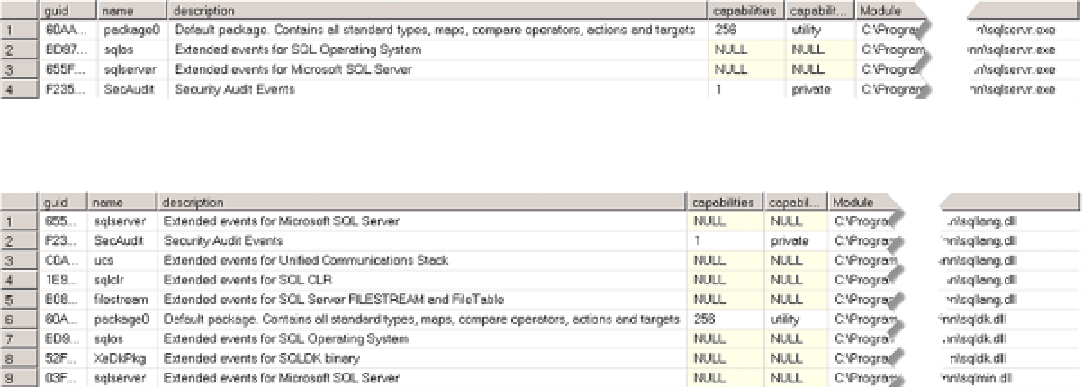Database Reference
In-Depth Information
Extended Events Objects
The Extended Events framework consists of several different objects. Let's examine them in detail.
Packages
SQL Server combines Extended Events objects into
packages
. You can think of packages as containers for metadata
information. Each Extended Events object is referenced by a two-part name, which includes package and object
names. Packages do not define a functional boundary for the events. It is completely normal to use objects from
different packages together.
Different versions of SQL Server have a different number of packages available and expose them with the
sys.dm_xe_packages
view. You can examine them with the code shown in Listing 28-1. The
Capabilities
column is a
bitmask that describes the properties of the package. The leftmost bit indicates if the package is private. For example,
the
SecAudit
package is private and used by SQL Server for Audit functions. This package cannot be referenced in any
user-defined Extended Events session.
Listing 28-1.
Examining Extended Events Packages
select
dxp.guid, dxp.name, dxp.description, dxp.capabilities
,dxp.capabilities_desc, os.name as [Module]
from
sys.dm_xe_packages dxp join sys.dm_os_loaded_modules os on
dxp.module_address = os.base_address
Figures
28-2
,
28-3
, and
28-4
show the output of the query in SQL Server 2008, 2012, and 2014 respectively. As already
mentioned, different versions of SQL Server have a different number of packages.
Figure 28-2.
Extended Events packages in SQL Server 2008
Figure 28-3.
Extended Events packages in SQL Server 2012

